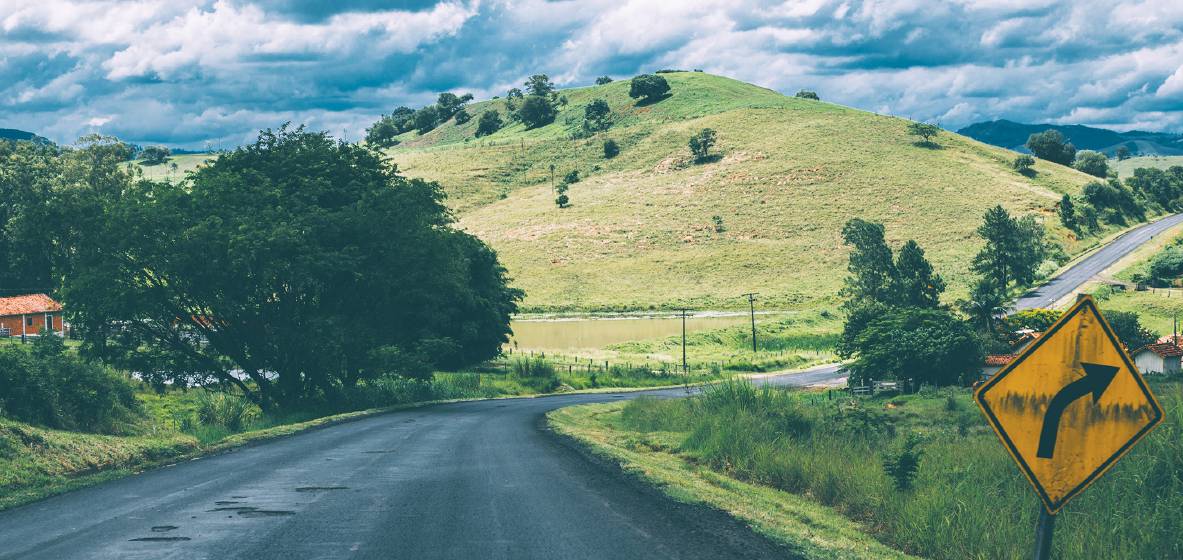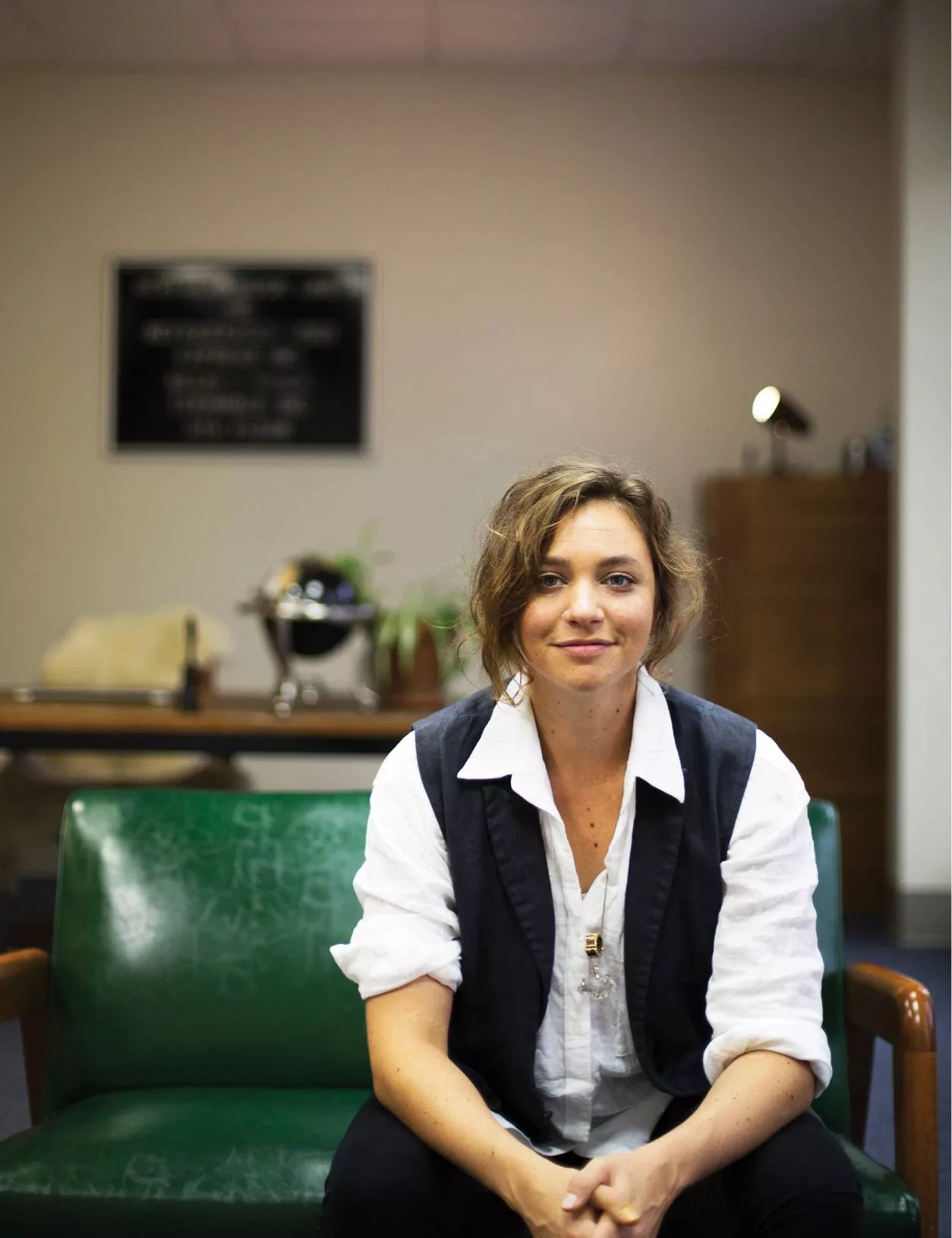RFX GLOBAL COMPANIES AT A GLANCE
Founded: 1952
Location: Boston, MA
Team Members: 45
2015 Sales: $100 million+
We have all heard the story before: a young heir to the family company takes the reins, determined to shake things up and do things differently, and causes predictably disastrous results.
What if we told you the young heir in this story was a 30-something female yoga teacher and artist, and the company was a 65-year-old trucking company — what would you expect then? Confusion? Resistance? Some comedy, even? You would be right, but you might be surprised to hear that success, joy, groundbreaking innovation, and higher margins are also part of the narrative; at least for Caitlin Welby, president and CEO of RFX Global Companies, who took over her family’s business in 2015.
Despite admitting to being “naively cute” when she took the reins, Welby and her team have reimagined the trucking industry from a conscious place. With two product lines focused on sustainability launching this year, the company is on track to begin transforming an old-school, typically carbon-intensive industry into one that can make a positive difference. We spoke with Welby and Chief Karmic Officer Matthew Cone about what it takes to champion positive change in an established company and industry.
Tell us a little about the history of RFX and your journey to becoming President and CEO.
Caitlin Welby: RFX Global Companies was started in 1952 in South Boston by my grandfather, who ran it for a short while, and then my grandmother ran it as a refrigerated trucking company, first locally, and then it grew regionally for the next 20 years through the ’60s and ’70s. Then my father took it over and ran it for about 20 years. Not too long ago, I decided to take the reins. My dad passed away in 2000 and his number two person ran it for a while, and he’s currently the chairman and transitioning into retirement.
It’s not exactly how I saw my life going. In fact, I adamantly believed that it was not where my life would go. A little background on me personally: I come from about 20 years of esoteric practices; I was into artistic studies and self inquiry; I went to art school after high school and did a lot of traveling, seeking, soul-searching, adventuring, and spiritual inquiry; I practiced and taught yoga; and consciousness studies have always been a big part of my experience. I was teaching yoga full-time and coaching people — nutritional, leadership, and spiritual coaching — and I had this lightning-bolt moment that coincided with some other experiences in my life.
I decided that it was time to be involved with the business and to use this platform to disseminate those values and opinions and perspectives on the universe that I’d been collecting for so long. I realized I had been denying this huge part of my lineage which was affording me the opportunity to be in this inquiry practice. It is really quite a blessing that I had the opportunity to really dive into these inquiries to the extent that I have in my life.
What was the decision to jump in like for you? Was there fear involved, or were you just inspired to get into the trucking industry and shake it up?
CW: I had gone through a lot of personal transformation and deep dives into what I want and who I am and what I think and feel about the world, and I’d already gone through so much processing around my father’s death and the cinematic narrative of his loss, which was attached to the company, that I felt a lot more fear when I was resisting it. When I stopped resisting it, I really dove in so acutely and naively and with such passion and authenticity that I really knew nothing.
It was like the tarot card of the fool, who is a happy-go-lucky person that steps off a cliff while looking into the sky, and that is sort of how it was in the beginning. I was like, “I’ve got this idea and I’m just going to do it; I’m going to teach yoga in the office and I’m going to feed all the employees organic food and I’ll just bring good vibrations to the office and we’ll shift consciousness. We’ll start where we are and use what we have and do what we can.” And I still believe all that, but I was just so cute when I came in — naively cute.
When you took the reins, what were some of the changes that you started to make immediately?
CW: When I came in, it was a 62-year-old company that had always been run like a mom-and-pop company. The first thing I did was start teaching yoga at lunchtime for 45 minutes and getting people to relax. I came in with the basics of what I know from an Ayurvedic perspective and a yoga perspective, which is get stress levels down, communication levels up, and to get some real food in the office. I also came in with my coaching practice to improve communication skills — just to remind people how we communicate with each other, what is appropriate, and even just to bring laughter to the office so that everybody wants to be there in the morning. I just wanted there to be my commitment to diving in so naively and making mistakes and making a mess, but being willing to be there and clean it up every step of the way. That’s really helped me. To be honest, we’ll still meet challenges in my transition. I’ll turn 34 in a few months, and I’ll probably see the resistance for a little longer, and that’s OK. It’s really pretty natural, and if it wasn’t there, I’d be a little more worried. for the organization’s mission, as opposed to involving ego and thinking that we know best what it needs. It’s important to be in a listening space to help get the organization to where it needs to go and to potentiate, rather than taking on the ego that it is us doing it all.
CW: How we like to think about it — and we do think about it this way every day — is that we’ve got this 65-year-old organism that we’re more joy in the office, so that I could internally listen and really understand the state of the company.
“What’s our purpose for existing as a company and how can we shift it forward? I keep asking myself those things every day and want to keep asking them for the next many years.”
When you came on board, did you feel any resistance from any of your team members based on the fact that you were 32 years old? Or were you welcomed with open arms?
CW: It was a little of column A and a little of column B! I was welcomed because I was quirky and different, and I wasn’t coming in with an iron sword; I was coming in with oatmeal and raisins . But I still represented change. I was a lot younger than a lot of people and I didn’t have a business background. I actually think being a woman and a yogi and my age were less of a hindrance than my lack of business acumen. But some of the people in the office had been with the office so long they had seen me as a child, seen me when I was as tall as my dad’s knees. They had watched me grow up and go through my hilarious art school phase, and different-colored hair, and all sorts of experimentation.
There was a natural resistance and a natural skepticism until they saw my commitment to being there, and
As someone who didn’t necessarily have much business acumen, as you say, what characteristics do you think helped you gain favor with your team members and be successful so far?
CW: I would say audacity, passion, and the want to really be a force for conscious, positive change in the world. Being passionately committed to change helps me get through a lot. Also, my spiritual practice is really important, as well as having a deep amount of self-inquiry about, “Who am I? What do I want? What do I want to do? What do I want us to do? What’s our purpose for existing as a company and how can we shift it forward?” I keep asking myself those things every day and want to keep asking them for the next many years.
What are your top pieces of advice for other mission-driven entrepreneurs?
Matthew Cone: I would say meditate and listen. I really like the idea that ultimately the organization has a mind of its own and the leaders are there to listen to what the organization wants and open up the door helping along here, that we’re helping transition to a new phase and into a new iteration. It’s really not us doing much, but it is us listening to what the organization, that organism, is ready for. We’ve watched it go from resistance to picking up speed to beginning to run again, and it really becomes this great image when we start thinking about it in that way.
Do you have any practices within the company that you use to disseminate your culture to your team members? What are you doing to get everyone on board with the new vision you’re creating?
CW: We have weekly management meetings; we start every meeting with gratitude circles and we meditate together. Once or twice a month we have a town hall with everyone where we bring in a bunch of organic food and let everyone’s voice be heard, because we are in transition — we’re in a leadership transition, a management transition, a location transition, we’re repositioning within the industry — all of these transitions all at once. Getting everyone’s voice heard helps, and getting everybody some organic food really helps, too!

“I feel like we’re right on the edge of something that is happening really soon, and being ahead of the curve is exciting because we can ride the wave instead of getting drowned by it.”
Paul Saginaw of Zingerman’s Deli told us that people usually have two reactions to change — they are either against it or they are really against it. For the people who have been at your company for 30 years and are used to the status quo, what tools have you employed to gain the momentum and critical mass you need to take the company in these new directions?
CW: It’s really all about communication. We’re all just weirdos trying to keep our noses above water. We’re all just humans; we’re all going to do the human thing. Change is different; change is weird. I’m an anomaly because I happen to love change. I get really excited about change, but that’s not the norm. It’s important to get everybody to stay communicative because then it’s easy to tell when the energy drops. I try to really keep a finger on the pulse and let people be in their vulnerable state of change — let them feel it, but ask them to communicate about it. We have to call it out because it affects all of us. We’ve got to keep the communication alive and keep it going even if it’s uncomfortable.
You stepped into your role with an art and yoga background and had studied lots of world traditions instead of having an MBA or a business background. Do you recommend that people stepping into leadership roles pursue some sort of business degree, or do you think your non-business education was advantageous for you?
CW: I think it was advantageous for me because I knew I had a good head on my shoulders and that I could make conscious decisions, but I wasn’t mired down or afraid of some of the things that somebody with an MBA might be more challenged by when they just walk in thinking, “OK, this is how I lead organizational change; this is what I do to get the margins up.” But I came in, as I said, as a cute, naïve kid, and I think it served me really well. Now I’m really diving into business theory and progressive business practices and thinking about how I want to be doing what I’m doing for the next 40 years.
What practices do you have in your life to help maintain your sanity while running an over-$100 million business as a 33-year-old?
CW: I wake up very, very early in the morning and start with yoga and meditation. I really have to start the day before dawn and make space. I make sure to eat the best foods and try to be aligned with nature. I try to let in spaciousness.
What benefits have you experienced as a result of shifting to these more conscious business practices?
CW: A huge benefit that we’ve seen — in addition to the growth of the company in terms of profits and margins — is that our joy space and the joy space of the people we work with has really grown and has created opportunities to seed and nourish on all sorts of levels.
How do you see the future?
MC: I was in the banking software business prior to the Internet, and my colleagues and I sensed this amazing energy coming at us. We weren’t quite sure what it was, but it was ultimately called the Internet, and all of a sudden everything just blew up and started moving really fast. I feel that way right now with the notion of conscious capitalism and conscious companies. I feel like we’re right on the edge of something that is happening really soon, and being ahead of the curve is exciting because we can ride the wave instead of getting drowned by it.
THE NUTS AND BOLTS OF RFX
EXISTING OFFERINGS

Refrigerated Food Express
The actual trucking line that was founded in 1952. Operated with owner-operators throughout the country.

RFX Inc.
A brokerage-based agency that provides support services such as billing, collections, and financing to a network of agents, connecting the switchboard of commodities movement throughout the US.
TWO NEW OFFERINGS IN THE CREATION STAGE

Hither to Yonder
A new concept developed by Welby, Cone, and team, which they are calling “artisanal logistics.” RFX will be taking on the logistics department for small to midsize companies or midsize to large companies, looking to align systems for passionate providers of creation-to-consumption goods who are putting a lot of love and passion into their artistry and goods.

PermaTrucking
Another new concept developed by Welby, Cone, and team to bring the principles of permaculture (a system of agriculture or social design based on emulating or using aspects of the natural ecosystem) to trucking. Cone says, “Our goal is to be able to find those 200 or 300 free-spirited truckers that understand permaculture and be able to connect those truckers with shippers who care about the whole ecosystem of their products — those who care about making the best products from creation to consumption, with the best ingredients, with the best people working on them. Those types of producers care about the truck and the driver who bring the product from the factory to the store for sale.”





